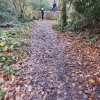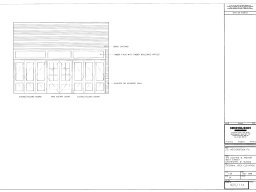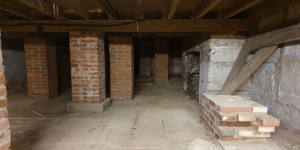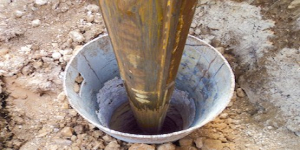Development along The Drive became clearer in the 1930s when some of
the properties were ascribed to the adjacent and ‘new’ Chestnut Avenue,
and a mix of detached bungalows and houses were built along the
northern side of The Drive. Further detached houses were also built in the
1930s at the southern end as the road neared its junction with The
Avenue. The road was not made up until the late 1970s.
Brandy Hole Lane, a leafy and highly attractive rural lane on the
outskirts of the City, is residential with houses built both before and after
the Second World War. It is also an essential conduit to the Local Nature
Reserve and Centurion Way for the whole of Summersdale. To promote
and protect these valuable recreational facilities, any development
opportunity that may arise must be handled most sensitively.
Environmental Features
The only productive farm in Summersdale lies to the north-east astride
the River Lavant, but throughout the area, the established streets are
lined with mature trees and well-stocked gardens, which together support
a diverse range of wild life.
To the south of Brandy Hole Lane is a historic copse of some 15 acres,
mostly coppiced woodland, with part of it belonging to the Chichester
District Council and the rest to two local landowners. Since 2001 it has
enjoyed benefits as a Local Nature Reserve, with funding, clear highway
signage, and information displays.
The copse is home to a wide range of birds, mammals, insects and plant
life. The woodland is generally dominated by sweet chestnut coppice with
occasional oak and birch trees, the coppicing letting in the light for flowers
to flourish. Most of the oaks are English, but there are a few rarer sessile
oaks and hybrids.
12
Protected Pipistrelle, Daubentons, Natterers and Whiskered bats are
known to roost in the copse, and have also been reported in houses close
to the site. Moths and other insects include the endangered stag beetle,
hornets, the elephant hawk moth which feeds on the nectar of
honeysuckle, and several common butterflies. The unusual white admiral
has been seen in pairs on several occasions. Summer surveys have
recorded 16 species of birds, many nesting in the copse, while mammals
include mice, rats, voles, shrews, squirrels, rabbits, foxes and the
occasional deer.
The three ponds in the copse support their own variety of species and
marginal plant life, while an abundance of flowering plants can be seen
throughout the woods.
The copse can be both a playground and an educational facility. It is open
to the public at all times, with entrances at either end of Brandy Hole
Lane. It is a valuable and much valued facility close to Summersdale’s
historic core, but with an Iron Age and colourful recent history of its own.
Besides Centurion Way, Summersdale is blessed with immediate access to
a network of walks across fields and roads to the east and north where
the hills of The Trundle and Kingley Vale beckon. From these local beauty
spots 360 degree vistas reach the harbour and the sea, the Isle of Wight,
Bognor and Worthing, the Goodwood estate with its airfield and race
courses, and the beautiful areas of Sussex to the north. There is much to
lift the spirits and enjoy, both within Summersdale and the surrounding
countryside.
Random articles of interest
The Punch house
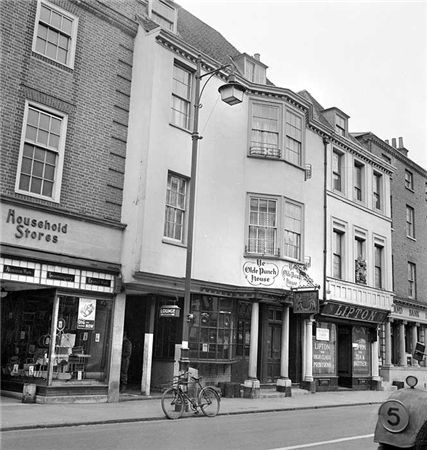
ON THE south side of East Street, close to the Market Cross, lies number 92 which up until fairly recently was The Royal Arms public house (also known as Ye Olde Punch House).
Although the façade dates to the Georgian era, the building is of a timber-framed construction said to date from the 16th century.
Much of the original building survives including highly decorated plaster ceilings displaying the Tudor Rose and fleur-de-lis.
It was once a private town house belonging to the Lumley family of Stansted.
65 East Street
DD
I worked at 65 East Street when it was ''Hammick''s Bookshop'' (now Specsavers). We had a trapdoor in the middle of the floor that led down to a tunnel-shaped cellar that seemed to extend through the front of the shop and under the pavement outside. I didn''t see any evidence of it ever having joined another tunnel and imagine that perhaps there was once an opening in the pavement for deliveries.
Featured in Chichester Observer
It was under the Crypt and right next to the cathedral
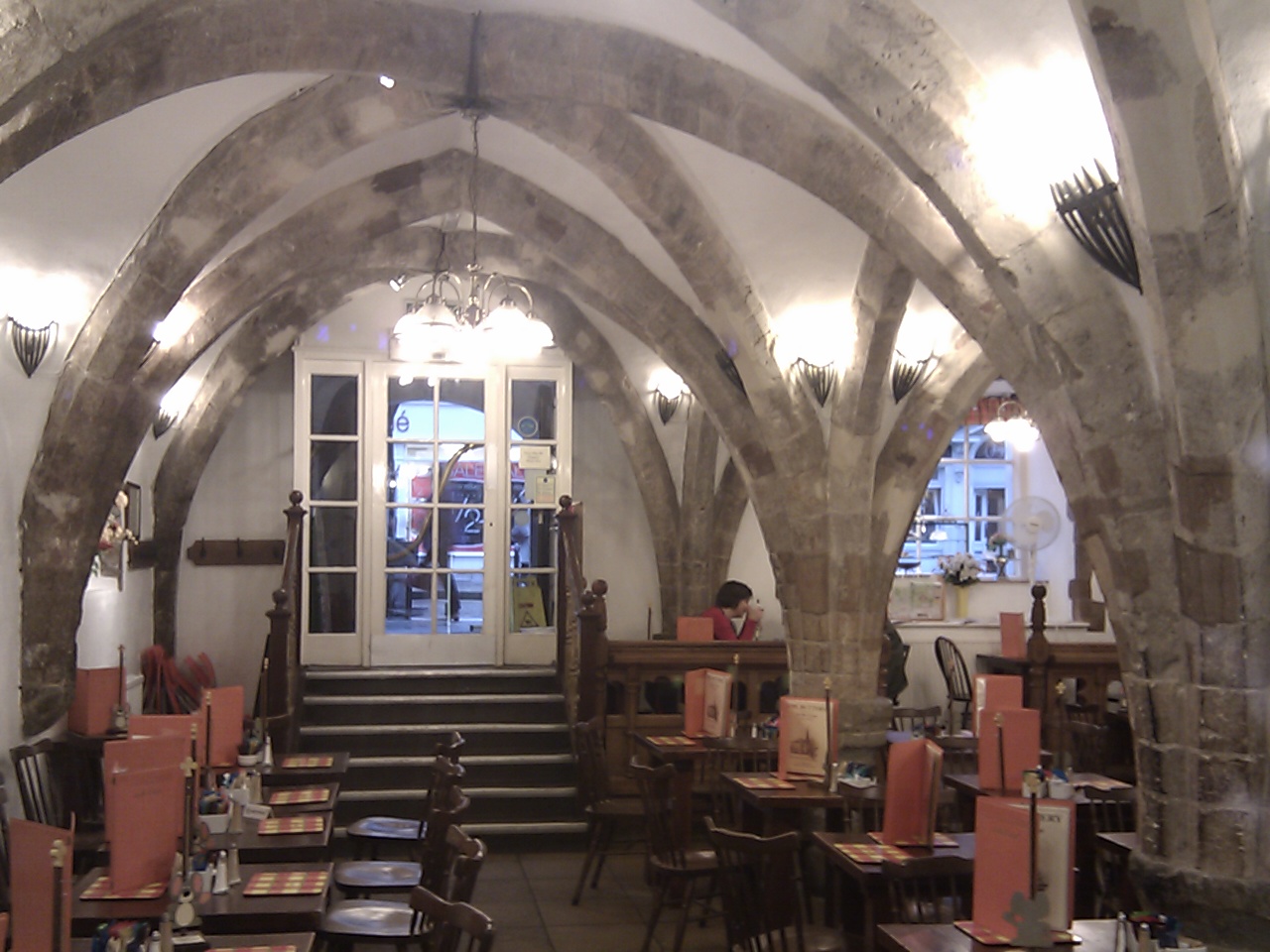
Maureen Williams, 82, of Westgate, recalled a school trip into the rumoured tunnels under Chichester when she was at Chichester High School for Girls.
She estimates she was in her early teens at the time and said she chose to share her memories after reading about the search for evidence in this newspaper.
Read more: It was under the Crypt and right next to the cathedral
where are the tunnels?

Are you curious about the tunnels in Chichester? If you are, you are not alone. Many people have wondered about the existence and purpose of these underground passages that are said to run under the city. Some claim they have seen them, others have heard stories about them, but what is the truth behind the mystery?
In this blog post, I will try to shed some light on the tunnels in Chichester, based on some web searches and historical sources. I will also share some of the rumours and legends that surround them, and invite you to share your own experiences or opinions in the comments section.
What are the tunnels in Chichester?
The tunnels in Chichester are a network of underground passages that are believed to date back to Roman times or earlier. They are said to follow the old foundations of the Roman wall on the east side of the city centre, and to connect various buildings and landmarks, such as the cathedral, the market cross, and the crypt.
The tunnels have been rumoured to serve different purposes over time, such as smuggling routes, secret passages for clergy, hiding places during the Reformation, or escape routes during wars or invasions. Some people also think that poet John Keats used the tunnels for inspiration when he wrote The Eve of St Agnes in Chichester in 1819.
However, there is little concrete evidence to support these claims, and most of them are based on hearsay or speculation. The tunnels have been blocked off or filled in over time, making them inaccessible or invisible to most people. Only a few traces of them remain, such as a blocked-off passage in the cellar of Hansfords Menswear shop, or a dark tunnel under the crypt where a schoolgirl claimed to have visited in the 1940s.
What do experts say about the tunnels?
The existence and origin of the tunnels in Chichester have been a subject of interest for archaeologists and historians for many years. However, they have not been able to confirm or deny their presence or function with certainty.
One of them is Claire Mandville, She has been researching the tunnels in Chichester for a while, and has interviewed several people who claim to have seen or heard about them.
She said: "There's definitely something there but it's hard to say what it is. It could be anything from drainage systems to cellars to actual tunnels. It's possible that some of them were used for smuggling or other purposes but it's hard to prove. I think they are fascinating and I would love to explore them if I could."
Also plans to expand his research and investigations on the tunnels, and to involve more of the local community in his project. She said: "I think it's important to document them before they are lost or forgotten. It's a great way to engage people with their local heritage and culture."
What do you think about the tunnels?
The tunnels in Chichester remain a mystery that intrigues many people. Whether they are real or not, they have inspired stories and legends that add to the charm and character of the city. What do you think about them? Have you ever seen them or heard about them? Do you have any theories or questions about them? Let me know in the comments below!
27 East street
MB
My mum worked 27 east street and when it flooded in the 90s they found a big cellar and you could look down into an area which was like a tunnel
Brandy Hole caving session

From trying to locate the areas marked on the old maps as smugglers or roman caves at the approc following locations. Our team tried to take photos as best we could.
su 85228 06608 50.8527, -0.7906
su 85255 06596 50.8526, -0.7902
su 85249 06577 50.8524, -0.7903
su 85248 06565 50.8523, -0.7903
su 85329 06661 50.8532, -0.7892
su 85359 06657 50.8531, -0.7887
Borehole drilling
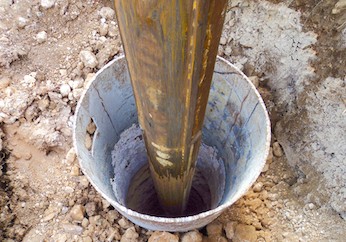
Borehole drilling is a technique that allows you to access underground water sources by creating a deep and narrow hole in the ground. In this blog post, we will explain what borehole drilling is, how it works, and what are its benefits and challenges.
What is borehole drilling?
Why build a cellar

First, there are no maps in the presentation to hidden tunnels , all information is in the public domain and if we get distracted during our searches that is only natural.
I will try and make this as interesting as possible and we will not be getting our boots dirty.
Why have a cellar?
Having a cellar was actually quite an expensive and a time consuming affair. Most people didn't. There was no point unless there was something to store or servants to hide.
